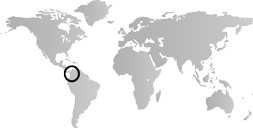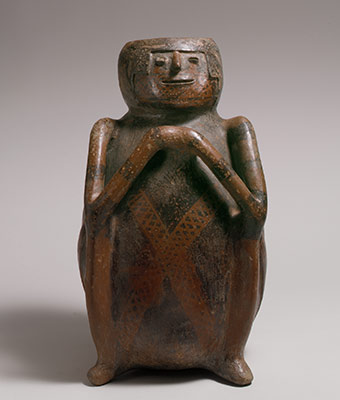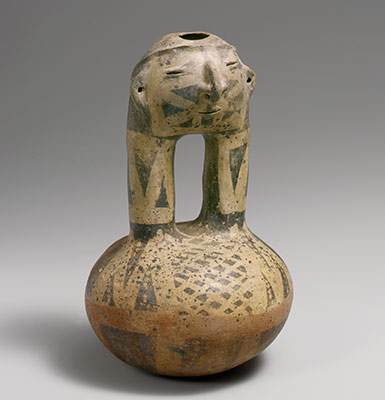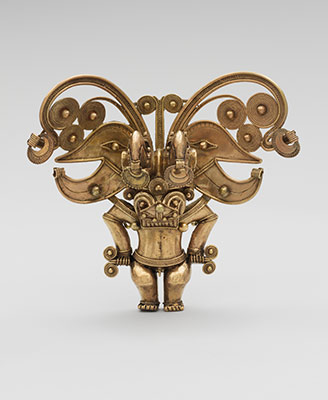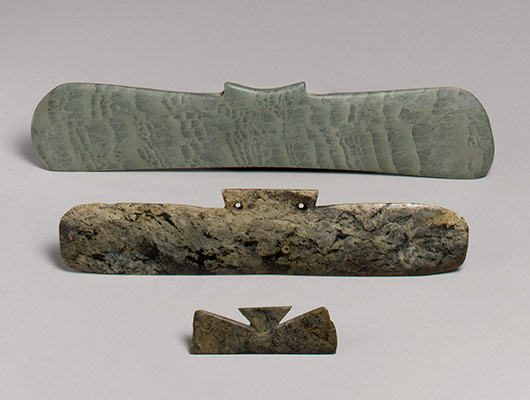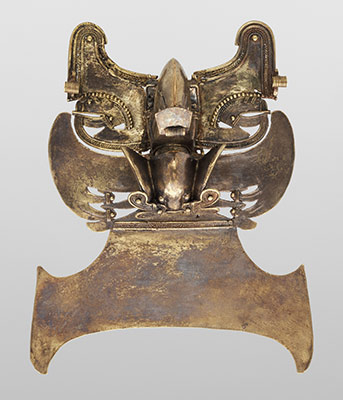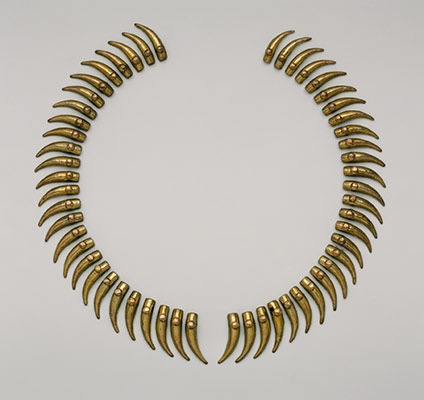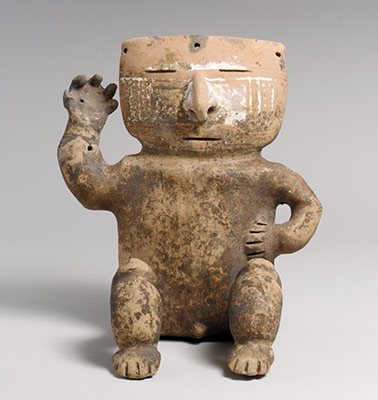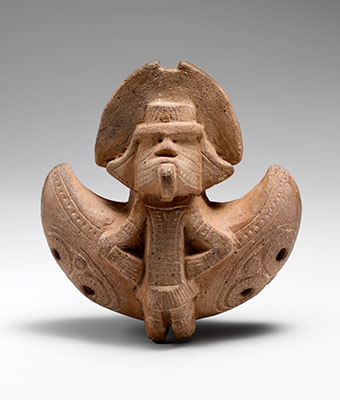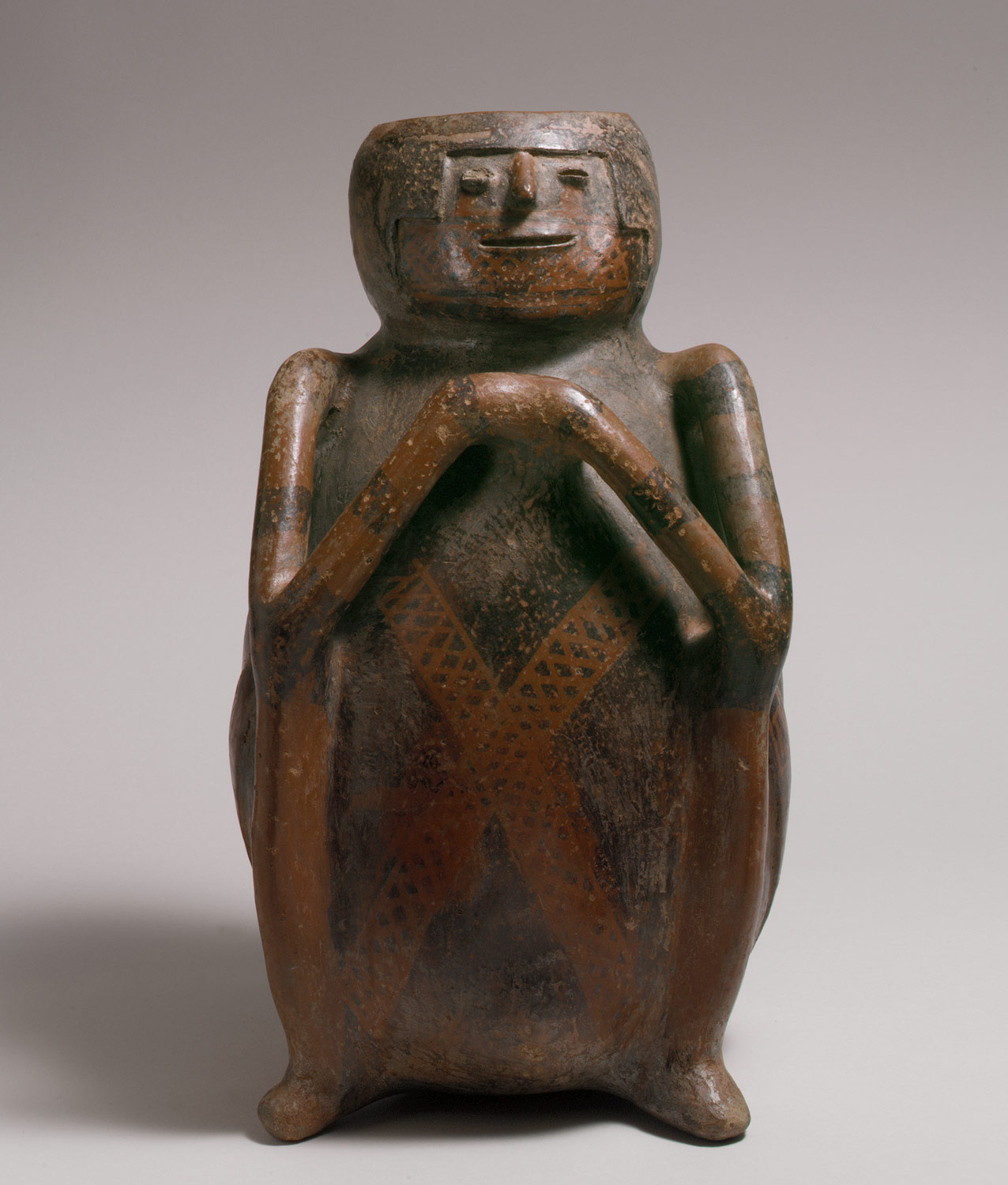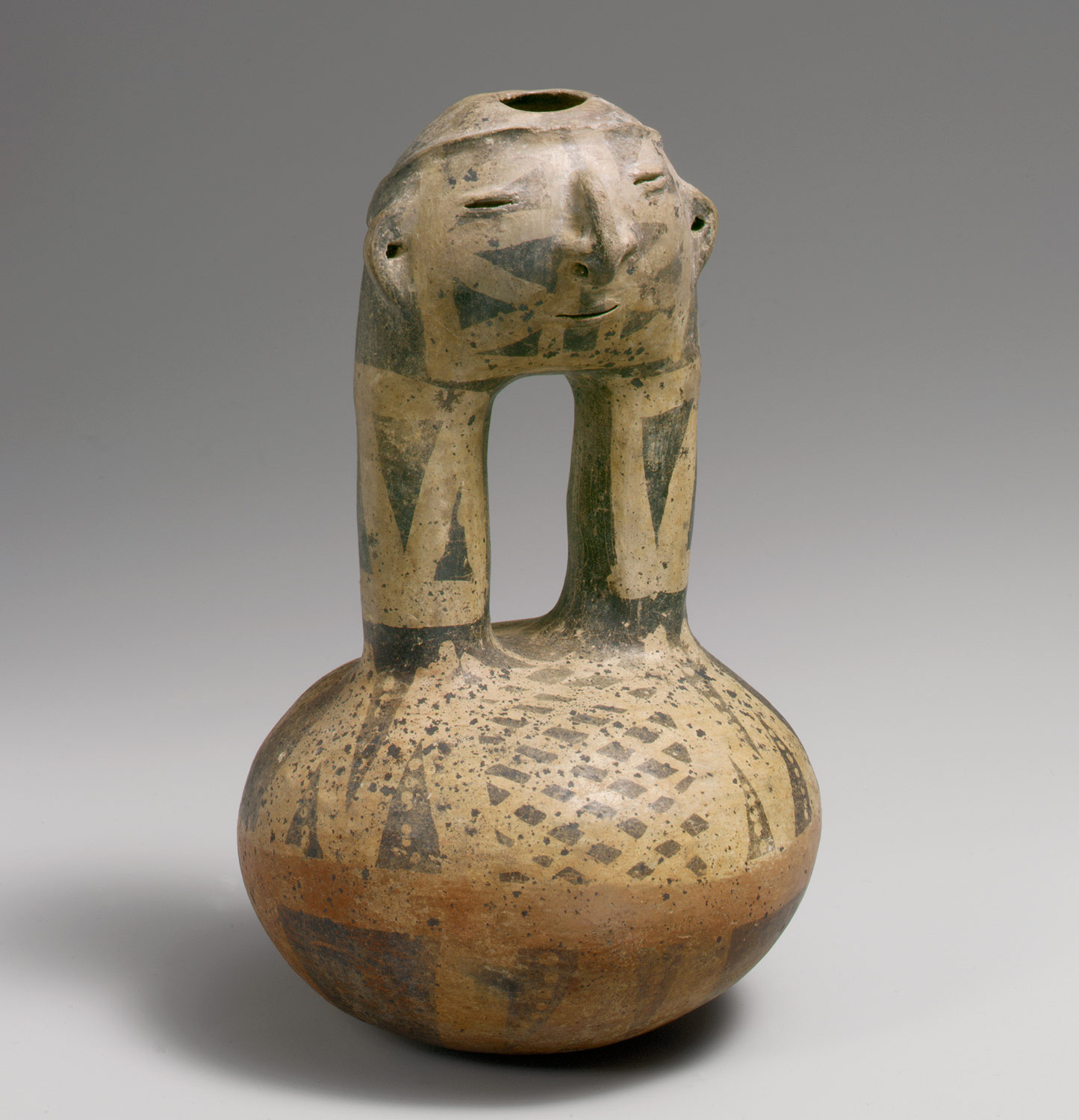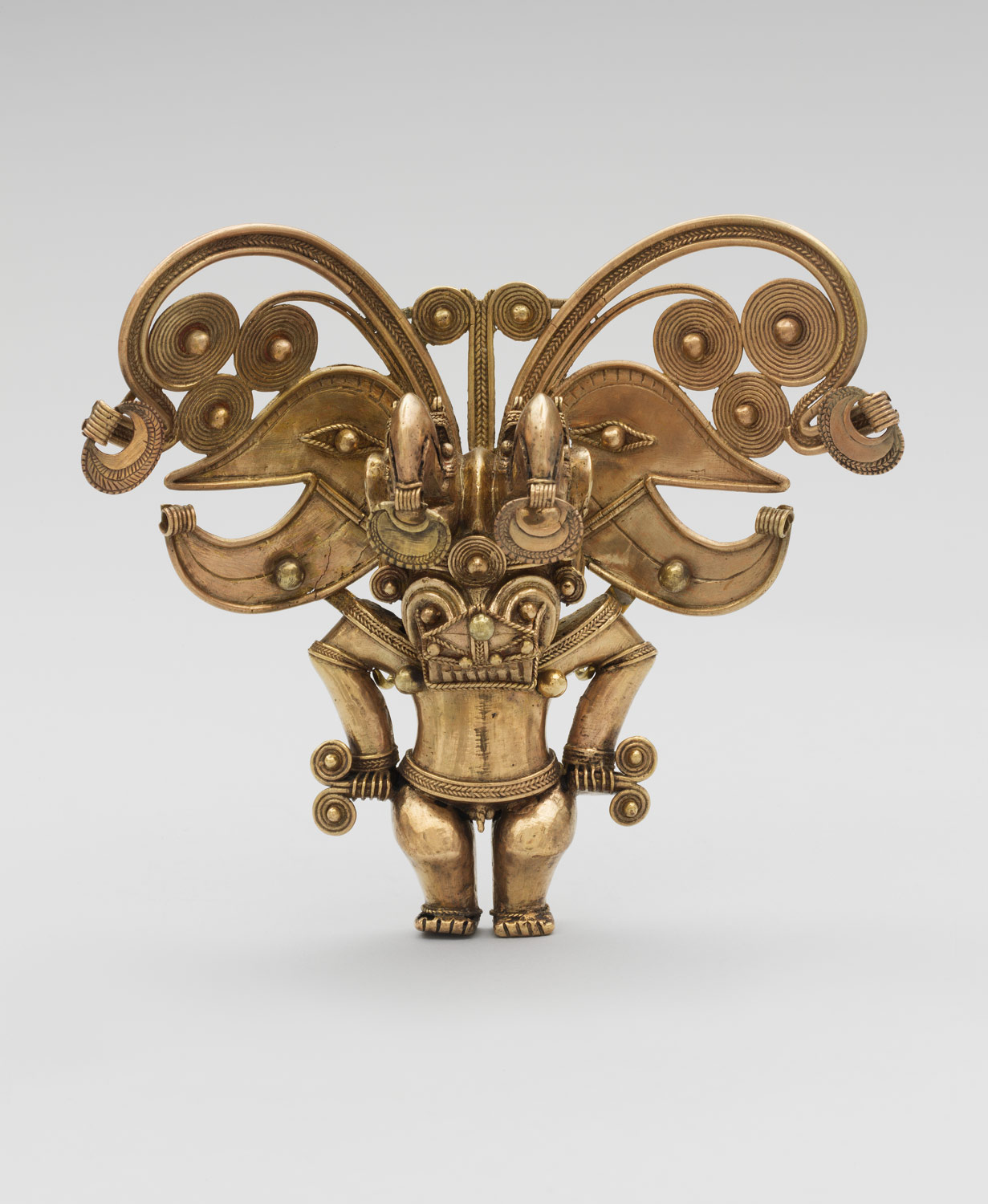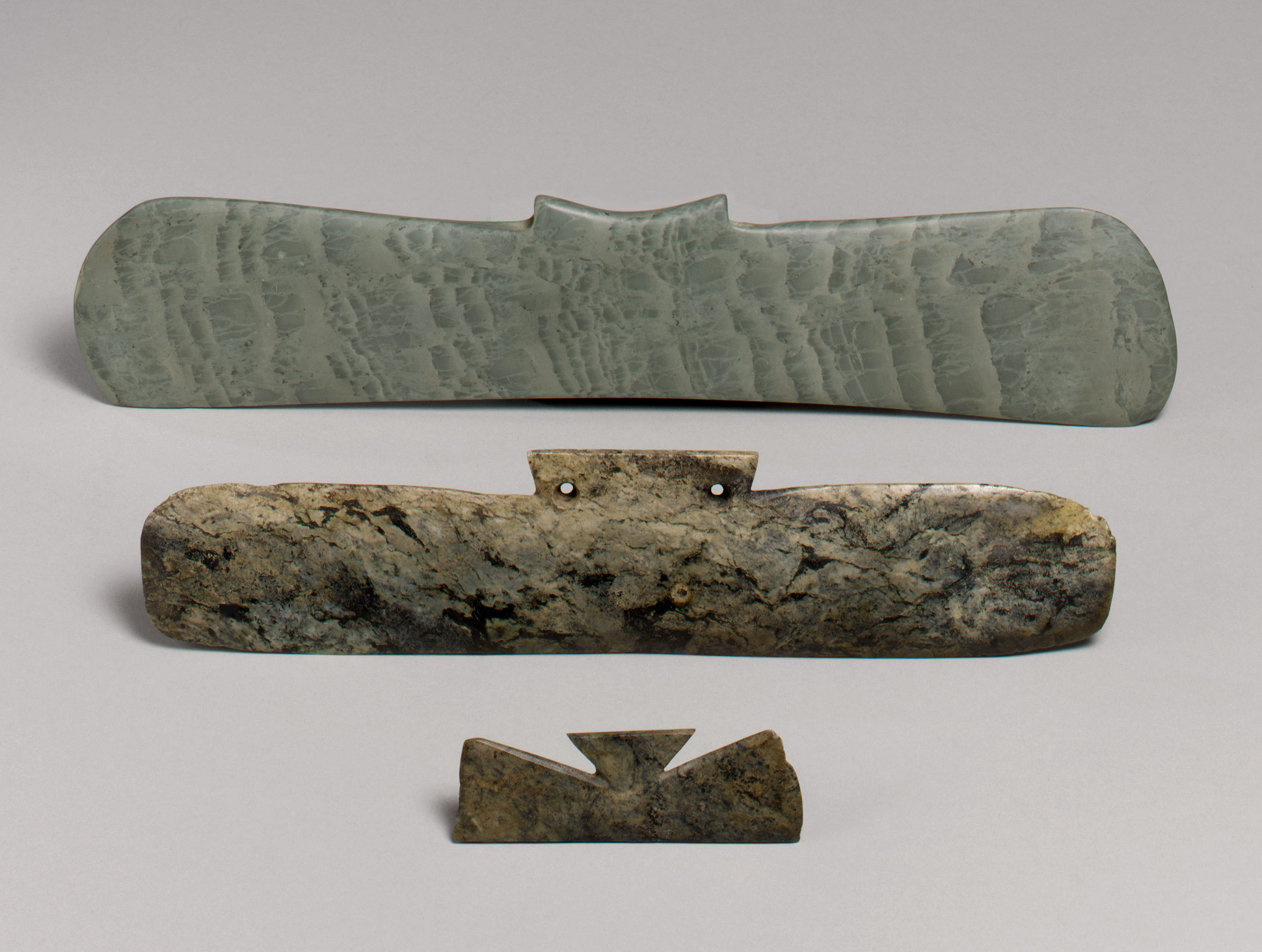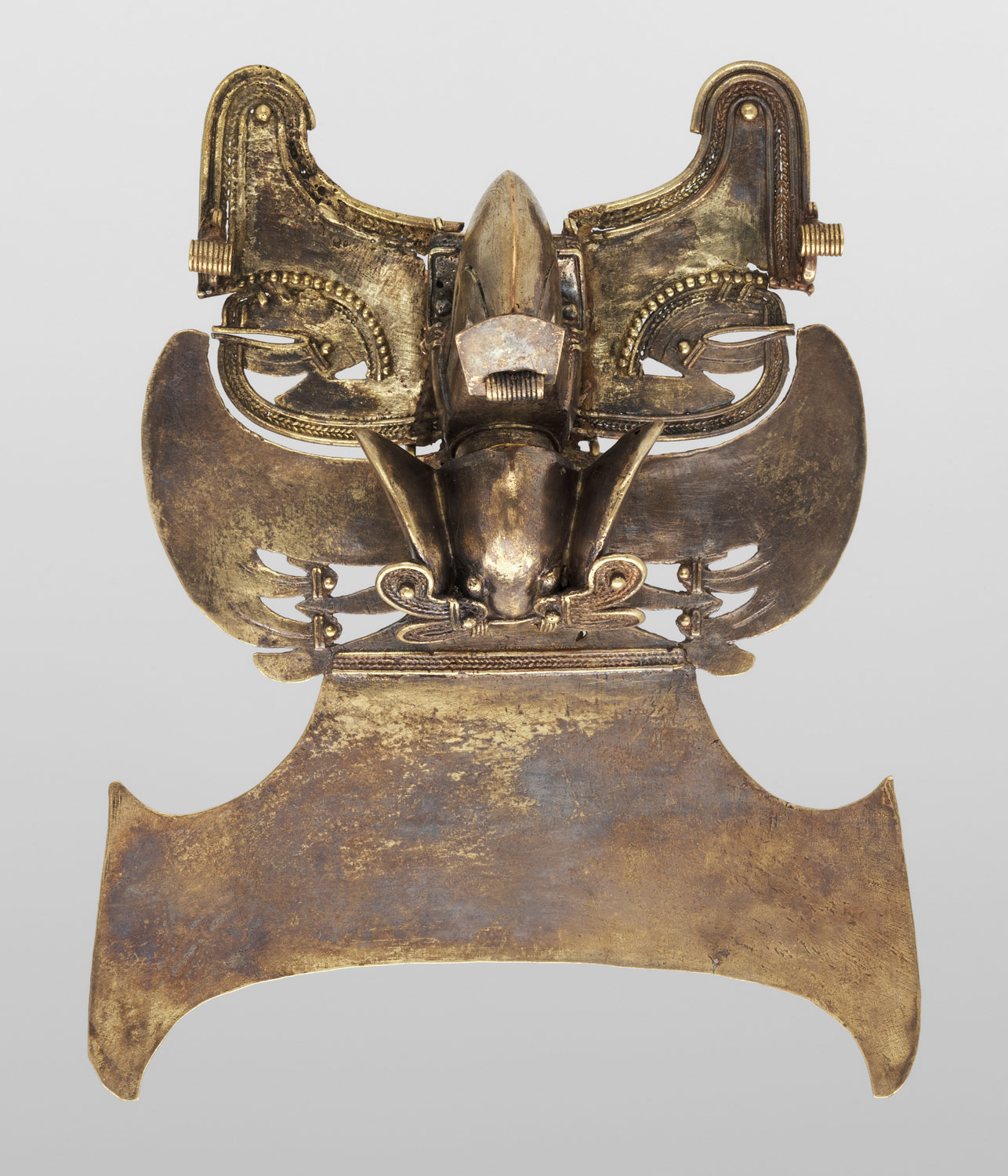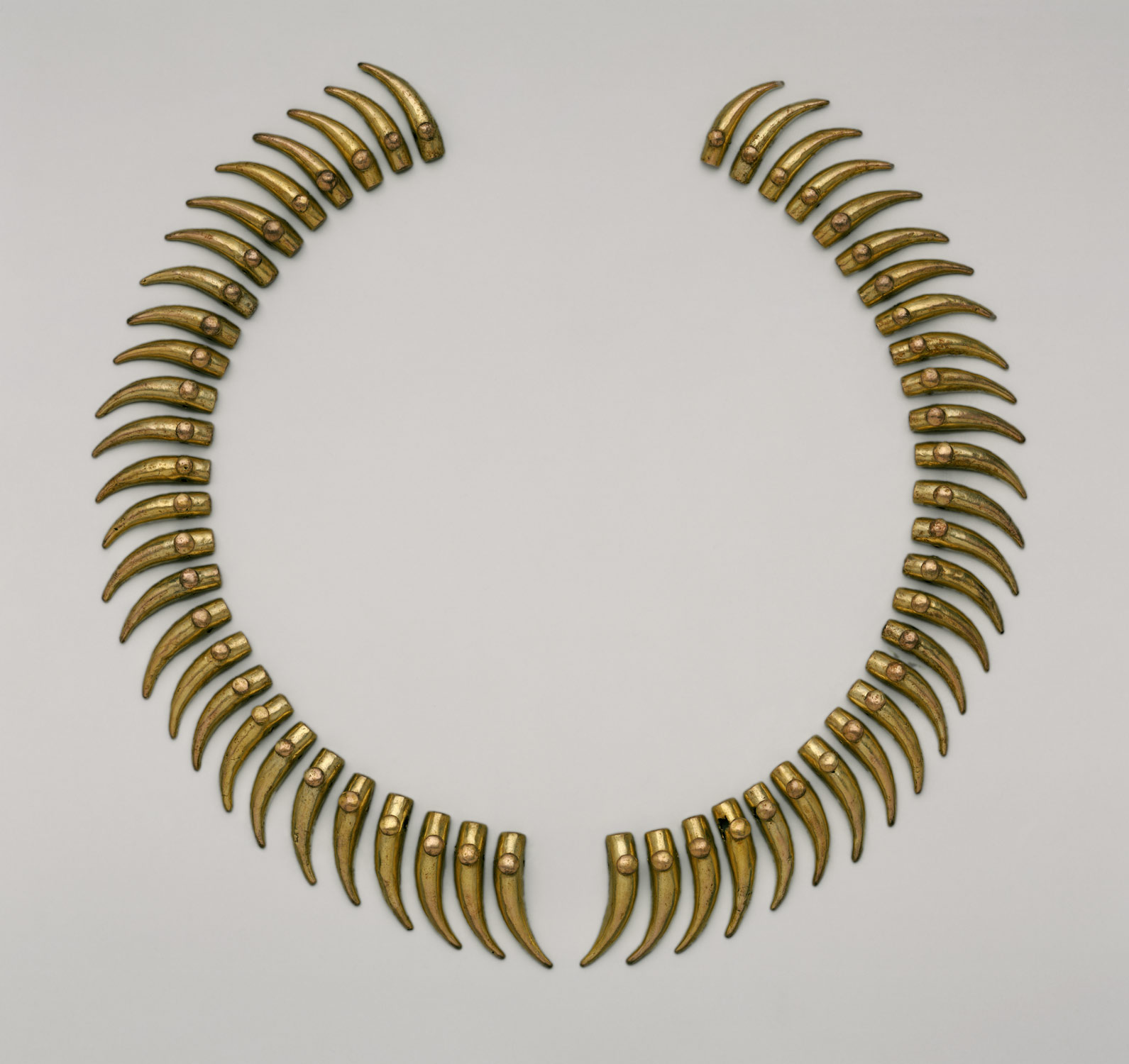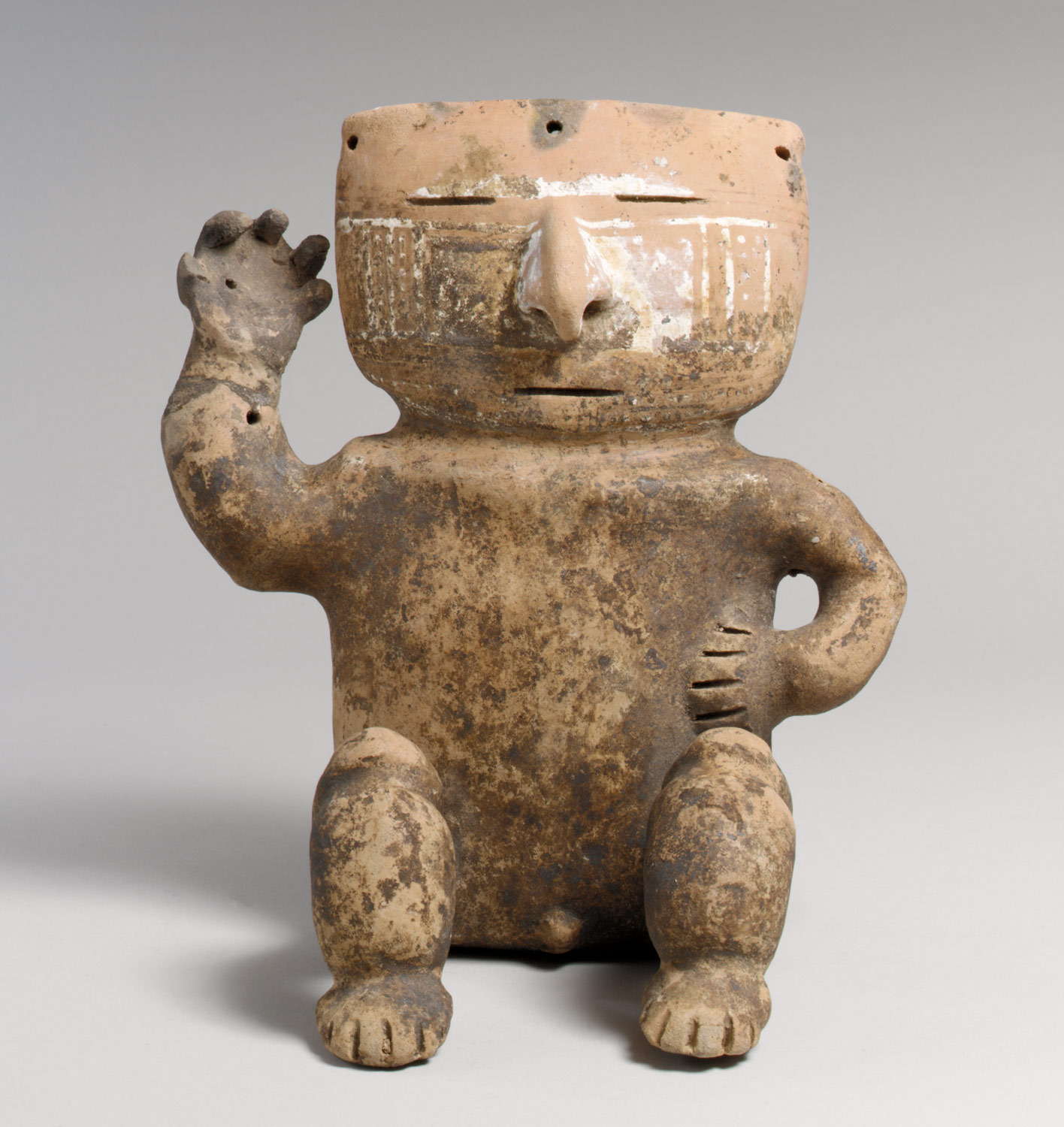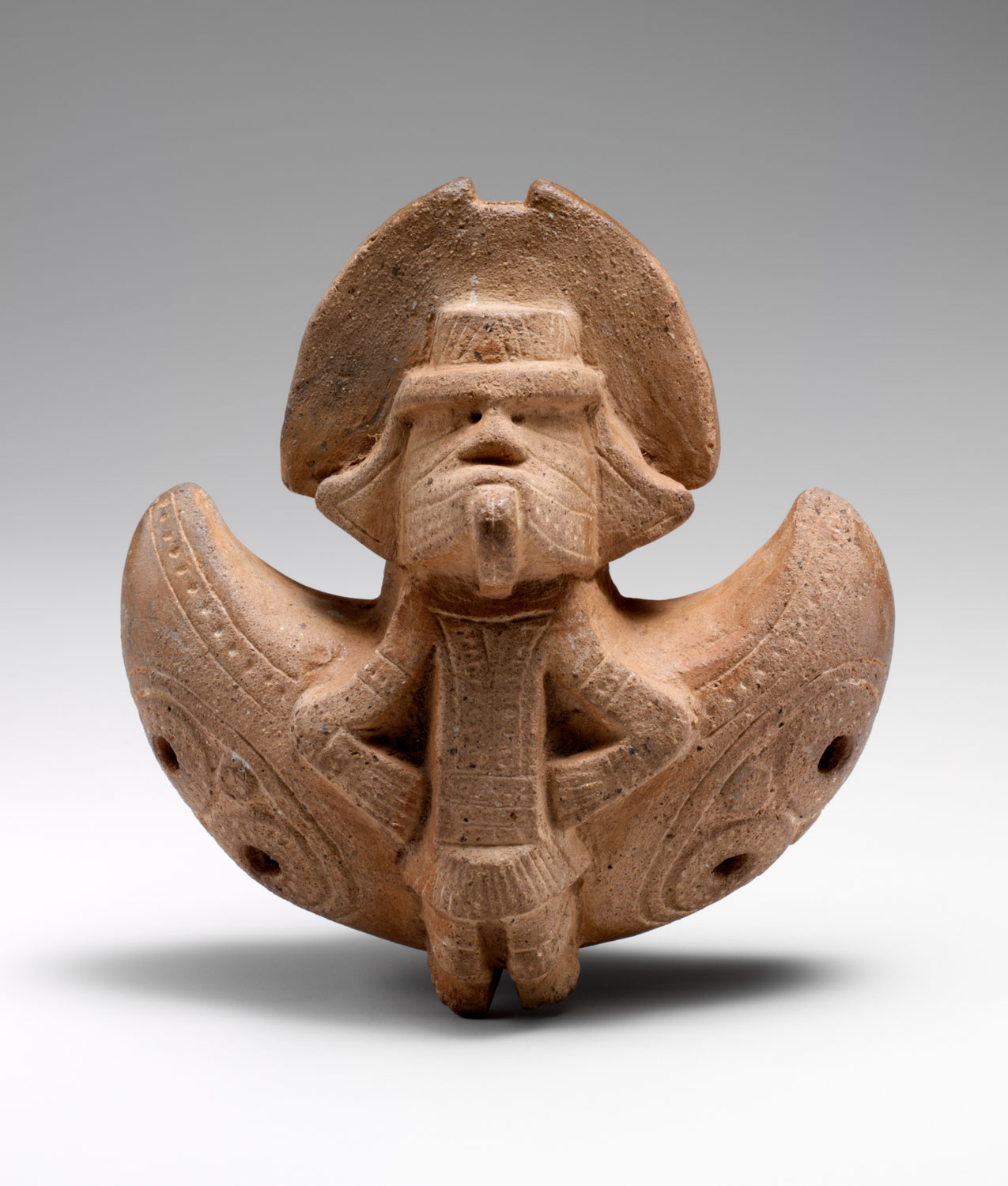Sizable populations inhabit the valleys and highlands in scattered villages and small towns. Terraced mountain slopes, advanced irrigation systems, and sophisticated drainage canals in low-lying coastal areas provide ample fertile land for intensive agriculture. Politically people are organized in small and large independent chiefdoms; some control several dozen settlements, others one or more valleys. Despite frequent wars and conflicts, no group succeeds in establishing a state. Many peoples are ethnically related and in close contact through trade, but the variety in ceramic styles, metalwork, architecture, and burial practices reflects significant cultural differences. Construction of earth mounds (tolas) increases noticeably; stone is used for facing mounds and staircases, paving roads and plazas, and as foundations for buildings only in a few areas. Many groups continue to bury their important dead in shaft tombs with niches or side chambers or in urns; others inter them beneath mounds or house structures. Burial offerings include ceramic vessels and ornaments of semi-precious stone, shell, metal, and perishable materials such as textiles and featherwork. Metalworking using copper alloys continues. In many areas emphasis is on mass production of simple, small-scale ornaments rather than the manufacture of elaborate works bearing complex imagery as in earlier periods.
Northern Andes, 1000–1400 A.D.
Timeline
1000 A.D.
1100 A.D.
NORTHERN COLOMBIA
CENTRAL COLOMBIA
SOUTHWEST COLOMBIA
COASTAL ECUADOR
HIGHLAND ECUADOR
1100 A.D.
1200 A.D.
NORTHERN COLOMBIA
CENTRAL COLOMBIA
SOUTHWEST COLOMBIA
COASTAL ECUADOR
HIGHLAND ECUADOR
1200 A.D.
1300 A.D.
NORTHERN COLOMBIA
CENTRAL COLOMBIA
SOUTHWEST COLOMBIA
COASTAL ECUADOR
HIGHLAND ECUADOR
1300 A.D.
1400 A.D.
NORTHERN COLOMBIA
CENTRAL COLOMBIA
SOUTHWEST COLOMBIA
COASTAL ECUADOR
HIGHLAND ECUADOR
Overview
Key Events
-
ca. 1000
People in the Calima region of southwestern Colombia live in small villages of up to fifteen houses built on terraces. Models of houses in sheet gold and ceramic show they are of rectangular shape with pointed roofs. Terraces for the cultivation of corn, beans, yucca, and squash are also built.
-
ca. 1000
Coastal peoples in Ecuador are heavily engaged in sea commerce with Peru and Colombia. They trade primarily cotton cloth and spondylus shell for wool cloth and copper.
-
ca. 1050
At Tamalameque, along the lower Magdalena River in Colombia, the remains of the dead are placed in tall, oval ceramic urns. Covered with lids with large modeled heads and short, stubby arms, the urns are kept in side chambers of shaft tombs.
-
ca. 1050
The Milagro-Quevedo peoples, inhabiting the Guayas basin in southern Ecuador, produce distinctive ceremonial ceramics. Well-burnished, red-slipped pedestal bowls are decorated on the outside with appliquéd human figures, snakes, frogs, and birds.
-
ca. 1100
A spectacular cast-gold pendant, almost twelve inches tall, is placed in a burial near the modern town of Popayán in the upper Cauca River area. Depicting a transformation image, it features a human figure with a lizardlike body surrounded by small bird-headed humans and quadrupeds.
-
ca. 1100
Cochasquí, north of Quito, is an important center of a local chiefdom. It has about fifteen rectangular mounds (tolas) arranged in clusters, many with long earthen ramps leading to the top. Separated from the tolas, circular funerary platforms covering shaft-and-chamber tombs are built.
-
ca. 1150
Numerous small, independent chiefdoms flourish in the middle Cauca Valley. They produce quantities of small adornments of hammered sheet gold, including spiral ear and twisted nose ornaments.
-
ca. 1150
In eastern Ecuador, people build small settlements consisting of single or double rows of houses along the banks of the Napo River. They bury their dead without offerings in ceramic urns placed beneath house floors or at random rather than in cemeteries. The urns are often in the form of seated males with white-slipped surfaces and black and red painted design.
-
ca. 1150
People in the highland region of Nariño in southern Colombia and Carchí in northern Ecuador produce handsome footed bowls embellished with black-on-red or black-on-cream resist designs with added red. The well-polished surfaces inside the bowls are decorated with motifs ranging from stylized animals and human figures to geometric designs.
-
ca. 1200
At Ingapirca, northeast of Cuenca in the southern Ecuadorian Andes, a twenty- to thirty-year-old Cañari noblewoman is buried with all her finery; she is accompanied by ten male and female attendants. Her grave is marked with a stone pavement and a stela at one end.
-
ca. 1200
The Tairona of the Sierra Nevada de Santa Marta in northern Colombia produce complex gold objects of tumbaga. Of considerable volume and intricate detail, many castings depict human beings with animal attributes wearing spectacular headdresses.
-
ca. 1250
Ceramic spindle whorls are handsomely decorated with excised patterns of birds, animals, and human faces or incised geometric motifs. They are used for spinning cotton in numerous textile production centers in southern Manabí Province in Ecuador.
-
ca. 1250
Cultural changes spread through the Calima area. Ceremonial and funerary ceramics of the Sonso tradition are thick-walled and coarse. Decorative techniques include appliqué, incising, and modeling. Gold offerings in Sonso burials are few, consisting often of a single small nose ring.
-
ca. 1300
Stone stelae and thrones with U-shaped seats resting on crouching human or animal figures are placed on the summits of hills at Cerro Jaboncillo in Manabí Province in Ecuador. The upper part of the stone stelae can be carved in low relief with seated frontal human or animal figures with splayed arms and legs. They can reach three feet in height.
-
ca. 1300
Lake Guatavita, north of Santa Fé de Bogotá, is considered sacred by the Muisca people. When a new chief is installed, he is covered from head to toe with gold dust (hence the name “El Dorado,” the Gilded Man). He is taken on a raft to the middle of the lake where he throws quantities of gold objects, called tunjos, into the lake as offerings to the gods.
-
ca. 1350
Elite burials of the Milagro-Quevedo peoples contain many gold, silver, and copper ornaments. Graceful and elegant in design, ear and nose ornaments are made of metal wire bent into a variety of loops and coils, often with added round, square, or diamond-shaped dangles.
-
ca. 1350
The town of Buritaca 200, also known as Ciudad Perdida, or Lost City, in the far north of Colombia, is a main center of a Tairona chiefdom. Built along a mountain ridge at an altitude of almost 4,000 feet, the city has more than 200 stone-faced terraces and a large ceremonial center with paved plazas.
-
ca. 1400
Manteño potters in Ecuador’s Manabí Province produce distinctive blackware ceramics finished with high luster polish. Impressive sculptures, up to two feet tall, depict males sitting on stools or standing atop bell-shaped bases. The bodies of the naked figures are amply decorated with incised motifs representing body paint or tattooing. Their heads are covered with broad, saucer-shaped headdresses.
-
ca. 1400
The Quimbaya people make solid ceramic human figures from thick slabs of clay to which heavy limbs are added. The seated male and female figures have hands on knees and perforated hook noses holding simple copper or tumbaga rings. They have holes through their heads and bodies, perhaps to hold feathers or other ornaments.
Citation
“Northern Andes, 1000–1400 A.D.” In Heilbrunn Timeline of Art History. New York: The Metropolitan Museum of Art, 2000–. http://www.metmuseum.org/toah/ht/?period=07®ion=san (October 2006)
Related
Map
